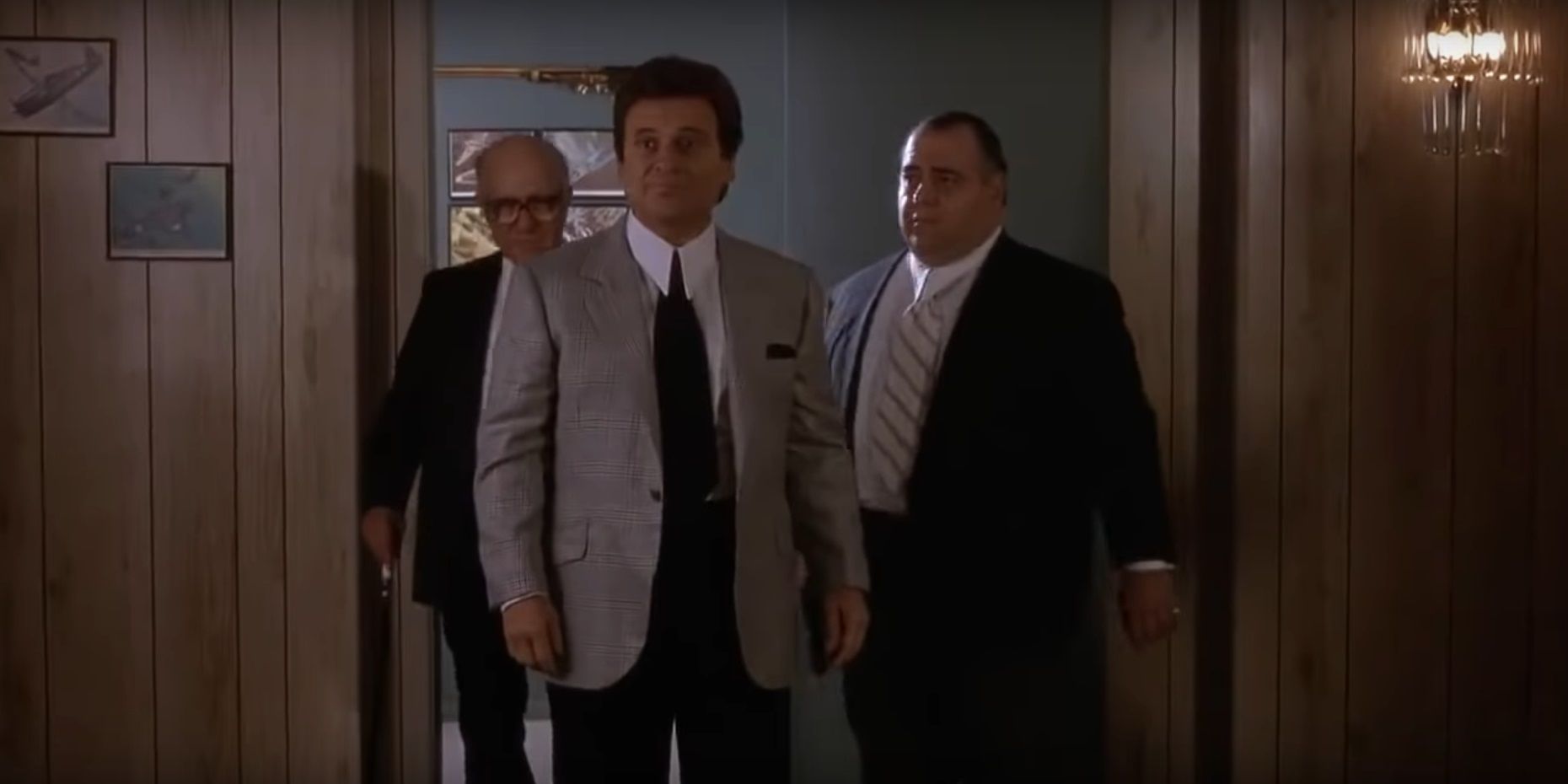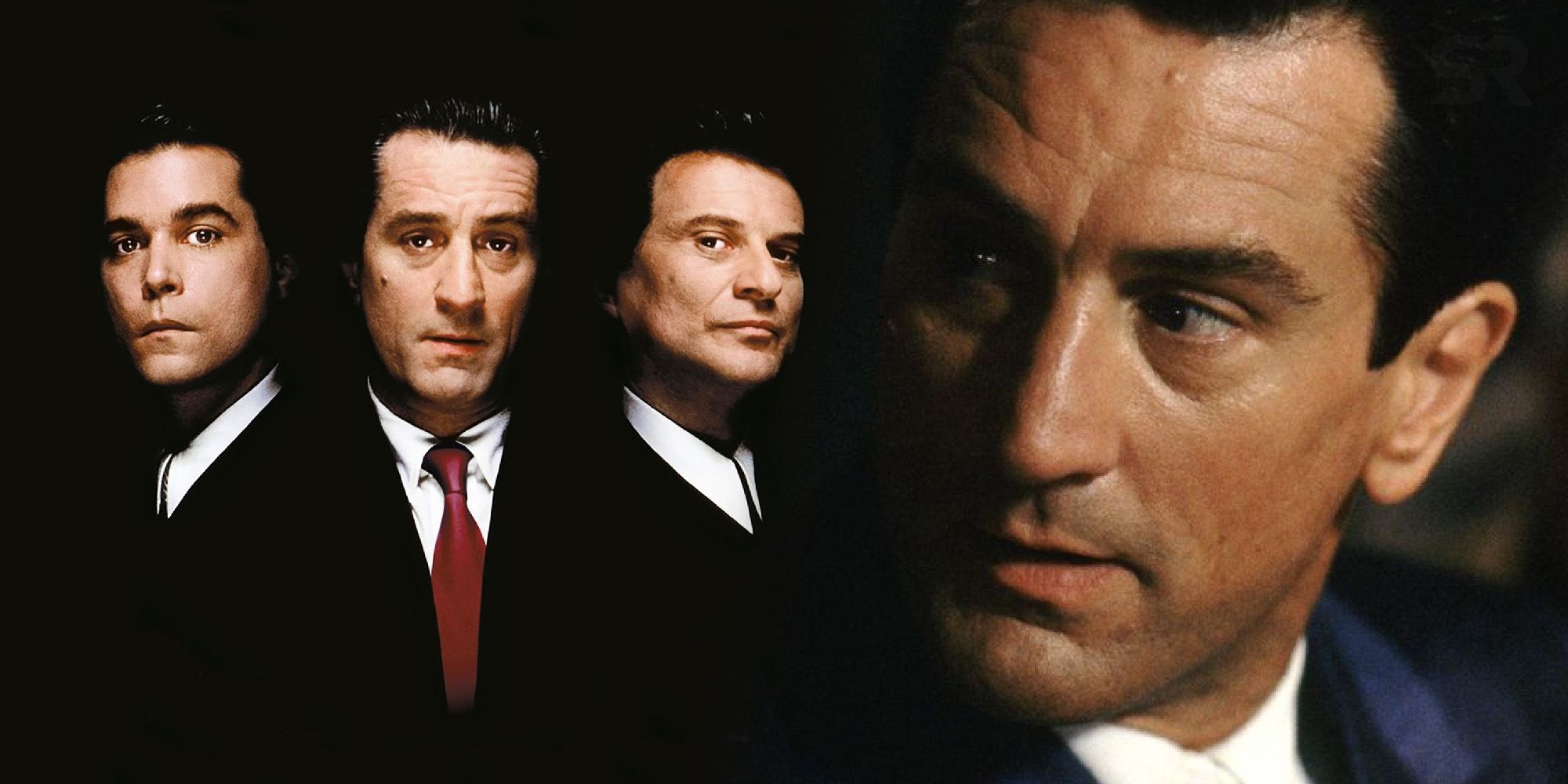Goodfellas Mystery: Why Jimmy Survived Tommy's Fate? The Truth!
Why did Jimmy Conway, the meticulous and ruthless planner in Martin Scorsese's "Goodfellas," seemingly evade the consequences that befell his volatile accomplice, Tommy DeVito? The answer lies in a complex interplay of power dynamics, ethnic affiliations, and the brutal realities of Mafia justice. While both were complicit in numerous crimes, including the murder of Billy Batts, their fates diverged sharply, leaving a lingering question mark over the seemingly arbitrary nature of underworld retribution.
The film, a cinematic masterpiece based on the real-life experiences of Henry Hill, paints a vivid picture of the Mafia's inner workings. We're introduced to a world where loyalty is conditional, violence is commonplace, and the slightest misstep can be fatal. Tommy's unhinged behavior and blatant disregard for the established hierarchy ultimately sealed his fate. The murder of Billy Batts, a "made man" within the Gambino crime family, was a transgression that demanded severe punishment. While both Tommy and Jimmy were involved, the consequences disproportionately affected Tommy.
| Category | Details |
|---|---|
| Character Name | James "Jimmy the Gent" Conway (based on Jimmy Burke) |
| Portrayed by | Robert De Niro |
| Fictional Film | Goodfellas (1990) |
| Based on | Jimmy Burke, an Irish-American gangster |
| Criminal Activities | Armed robbery, truck hijacking, murder, extortion |
| Relationship with Henry Hill | Mentor and close associate |
| Key Role in "Goodfellas" | Mastermind of the Lufthansa heist |
| Ethnic Background (in reality) | Irish-American |
| Personality Traits | Calculated, meticulous, ruthless, charismatic |
| Fate (in reality) | Jimmy Burke was convicted of murder and died in prison in 1996. |
| Lufthansa Heist Involvement | Principal planner and organizer |
| Motivations | Power, wealth, and respect within the criminal underworld |
| Impact on Henry Hill | Significant influence, shaping his criminal career |
| Death in Goodfellas | Not depicted in the film; implies he faces justice for his crimes. |
| Reference Link | Biography.com |
The key difference lies in the "made man" status. Billy Batts was a member of the Gambino family, protected by the strict code of the Mafia. Tommy, on the other hand, was not "made," meaning he wasn't a full-fledged member of a Mafia family. This distinction is crucial. Killing a "made man" without the permission of the victim's family was a cardinal sin, one that almost always resulted in swift and brutal retribution. Tommy, lacking the protection afforded to "made" members, became the immediate target.
Consider the sequence of events as depicted in "Goodfellas." The tension is palpable after Batts' murder. Henry Hill, played by Ray Liotta, observes the unease and senses the impending doom. Paulie Cicero, the family's capo, is visibly stressed by the Gambino family's inquiries. He understands the gravity of the situation and the potential consequences for his crew. The film cleverly omits the exact details of how the Gambino family identified Tommy as the culprit, adding to the mystique and fear surrounding the Mafia's intelligence network. However, the message is clear: Tommy's actions had painted a target on his back.
The question then becomes: why wasn't Jimmy held equally accountable? Several factors contributed to his relative immunity. Firstly, Jimmy was known for his meticulous planning and his ability to generate significant revenue for the organization. He was a valuable asset, and killing him would have been a significant loss. Secondly, Jimmy's Irish-American heritage, while not a complete shield, offered a degree of separation from the strict Italian-American hierarchy of the Mafia. While he operated within the Italian Mafia, he was not bound by the same rules and expectations as "made" members. This outsider status, paradoxically, might have afforded him a sliver of protection. "It was when I met the world, and it was when I first met Jimmy Conway," Henry Hill reflects, highlighting the initial allure and power Jimmy exuded. "He couldnt have been more than 28, or 29 at the time but he was already a legend."
It's important to note that Jimmy's eventual fate was likely far from idyllic. While "Goodfellas" doesn't explicitly show his demise, the narrative strongly suggests that he ultimately faced justice for his numerous crimes. The film's epilogue indicates that Henry Hill testified against his former associates, leading to their convictions. It's highly probable that Jimmy was among those implicated and eventually imprisoned. However, the fact that he wasn't immediately "whacked" like Tommy points to the complex and often arbitrary nature of Mafia justice.
Further complicating the matter is the question of culpability in the Batts murder. While Tommy is often portrayed as the primary aggressor, some argue that Jimmy played a more significant role. "Jimmy stomped on his head and then shot him twice in the trunk of the car," a detail that suggests a more active involvement than simply being an accomplice. However, regardless of who delivered the final blow, the responsibility ultimately fell on Tommy due to his lack of "made man" status and his volatile reputation.
The Lufthansa heist, meticulously planned by "gentleman thief" Jimmy Conway and executed with the help of Tommy DeVito and Henry Hill, further underscores the contrasting fates of these individuals. The heist, a daring and lucrative operation, initially seemed to solidify their positions within the underworld. However, the subsequent paranoia and infighting over the stolen money led to a series of betrayals and murders, further destabilizing the crew and contributing to their eventual downfall.
The film highlights the pervasive fear and distrust that permeated the lives of these gangsters. Henry Hill recalls Paulie Cicero's deliberate movements, "[narrating] Paulie may have moved slow, but it was only because Paulie didn't have to move for anybody." This statement encapsulates the power dynamics and the inherent danger of challenging the established order. Tommy's actions, particularly the murder of Billy Batts, directly challenged that order, making him a target for retribution.
The dynamics within the crew are further complicated by the ethnic tensions that subtly simmer beneath the surface. Jimmy's Irish-American background, while not a complete barrier, created a distinct separation between him and the "made" Italian members of the Mafia. This difference in status, coupled with his proven ability to generate revenue, likely contributed to his temporary reprieve from the wrath of the Gambino family. "As far as Jimmy was concerned with Tommy being made, it was like we were all being made. We would now have one of our own as a member," highlighting the importance of loyalty and ethnic solidarity within the group.
In conclusion, the question of why Jimmy Conway wasn't "whacked" like Tommy DeVito in "Goodfellas" is multifaceted. It involves a combination of factors, including Tommy's lack of "made man" status, his volatile reputation, Jimmy's value to the organization, and the complex ethnic dynamics within the Mafia. While both were guilty of heinous crimes, the consequences were disproportionately borne by Tommy, highlighting the arbitrary and often brutal nature of underworld justice. "It was revenge for Billy Batts, and a lot of other things. And there was nothing that we could do about it," a sentiment that encapsulates the helplessness and fear that permeated the lives of those entangled in the Mafia's web.
The film also touches upon the allure and seductive nature of the gangster lifestyle. Henry Hill's famous line, "As far back as I can remember, I always wanted to be a gangster," speaks to the romanticized image of power, wealth, and respect that drew many into the criminal underworld. However, "Goodfellas" ultimately reveals the dark underbelly of this lifestyle, exposing the violence, betrayal, and constant fear that ultimately consume those who embrace it.
Ultimately, "Goodfellas" serves as a cautionary tale about the destructive nature of greed, ambition, and the seductive allure of the gangster lifestyle. It's a reminder that even those who seemingly evade immediate consequences are ultimately subject to the brutal realities of their choices. The film's enduring appeal lies in its unflinching portrayal of the Mafia's inner workings and its exploration of the complex moral compromises that define the lives of those who operate within its shadows.
Moreover, the ambiguity surrounding Jimmy Conway's ultimate fate further enhances the film's realism. Life in the Mafia was rarely neat or predictable. While Tommy's death served as a clear message about the consequences of violating the organization's rules, Jimmy's potential downfall remains shrouded in uncertainty, reflecting the often-unpredictable nature of criminal justice and the long-term repercussions of a life of crime.
The narrative implicitly suggests that the law eventually caught up with Jimmy, likely through Henry Hill's testimony. This underscores a crucial theme: the illusion of control within the Mafia. Characters believe they are masters of their destiny, manipulating circumstances and individuals to their advantage. Yet, "Goodfellas" consistently demonstrates the fallacy of this belief. The ever-present threat of betrayal, police intervention, and internal power struggles ensures that no one, not even a meticulous planner like Jimmy Conway, can truly escape the consequences of their actions.
The absence of a concrete depiction of Jimmy's demise contributes to the film's lasting impact. Viewers are left to ponder the ultimate price he paid for his life of crime, highlighting the theme of deferred justice. While Tommy's death is immediate and brutal, Jimmy's fate lingers in the background, a constant reminder that the wheels of justice, however delayed, eventually turn. This nuanced approach to portraying criminal consequences distinguishes "Goodfellas" from more simplistic gangster narratives, solidifying its status as a cinematic masterpiece.
In goodfellas, tommy devito was killed in retribution for the murder of billy batts, but how did batts' people know it was tommy?
Like link copied to clipboard
In martin scorsese's gangster movie goodfellas, tommy is whacked for taking out billy batts.
But how did the mafia know that tommy killed billy batts?
But if they figured out that tommy did the killing, wouldn't they also have known that jimmy and henry were
Living the dream \u201cas far back as i can remember, i always wanted to be a gangster.\u201d \u2014henry hill after watching tommy devito (pesci) and jimmy conway (de niro) stab and shoot a bloodied
We would like to show you a description here but the site won\u2019t allow us.
We would like to show you a description here but the site won\u2019t allow us.
In martin scorsese's 1990 film goodfellas, tommy (played by joe pesci) is the only member of the gang who is killed during the course of the movie.
In goodfellas, the lufthansa heist was planned by gentleman thief jimmy conway, and aided and abetted by tommy devito and henry hill.
Well, jimmy conway and tommy devito didn\u2019t really exist, and
With memorable characters like ray liotta\u2019s henry hill, robert de niro\u2019s jimmy \u201cthe gent\u201d conway, and lorraine bracco\u2019s karen hill, scorsese\u2019s goodfellas left an indelible mark on pop

The Goodfellas Diner Where Jimmy Finds Out Tommy Was Whacked YouTube

Goodfellas 15 Most Iconic Scenes, Ranked

Goodfellas Why Jimmy Conway Was Nicknamed "The Gent"